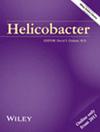Characterization of Fecal Microbial Communities in Patients With Type 2 Diabetes Mellitus Combined With Helicobacter pylori Infection
Abstract
Background
Helicobacter pylori (H. pylori) infection has the capacity to alter the gut microbiota composition. There is a significant correlation between H. pylori infection and type 2 diabetes mellitus (T2DM). Further research is necessary to explore whether gut microbiota plays a role in the relationship between H. pylori and T2DM.
Method
Fecal samples were obtained from 44 patients with T2DM, including 20 who tested positive for H. pylori and 24 who tested negative. Intestinal microbiota composition was analyzed via 16S rRNA V3-V4 amplicon sequencing. Differences in microbial distribution and significant microbial biomarkers were identified between H. pylori positive and negative groups. A Spearman correlation analysis assessed the relationship between intestinal microbiota and glycemic parameters. Additionally, PICRUSt2 was used to predict intestinal bacterial functions.
Results
Results indicate that in H. pylori (+) T2DM patients, HbA1c levels were significantly higher (8.9% vs. 8.1%, p = 0.021), while both the C-peptide peak (3.70 vs. 5.98 ng/mL, p = 0.040) and fasting C-peptide levels (1.42 vs. 2.31 ng/mL, p = 0.008) were significantly lower compared to H. pylori (−) T2DM groups. A total of 11 colonic phyla and 100 genera were identified in all fecal samples. In groups positive for H. pylori, there was a significant enrichment of the phylum Proteobacteria, while the genera Lactobacillus, Butyricimonas, and Akkermansia were significantly reduced (all p < 0.05). Correlation analysis showed that the abundance of the genera Butyricimonas (p = 0.01) and Akkermansia (p = 0.048) were negatively correlated with fasting plasma glucose. KEGG pathway analysis indicated a significant enrichment of methylmalonyl-CoA mutase and succinyl-CoA in H. pylori-infected T2DM patients.
Conclusions
This study suggests that T2DM patients with H. pylori infection exhibit more impaired pancreatic islet function potentially due to H. pylori-induced alterations in the gut microbiota.

 求助内容:
求助内容: 应助结果提醒方式:
应助结果提醒方式:


